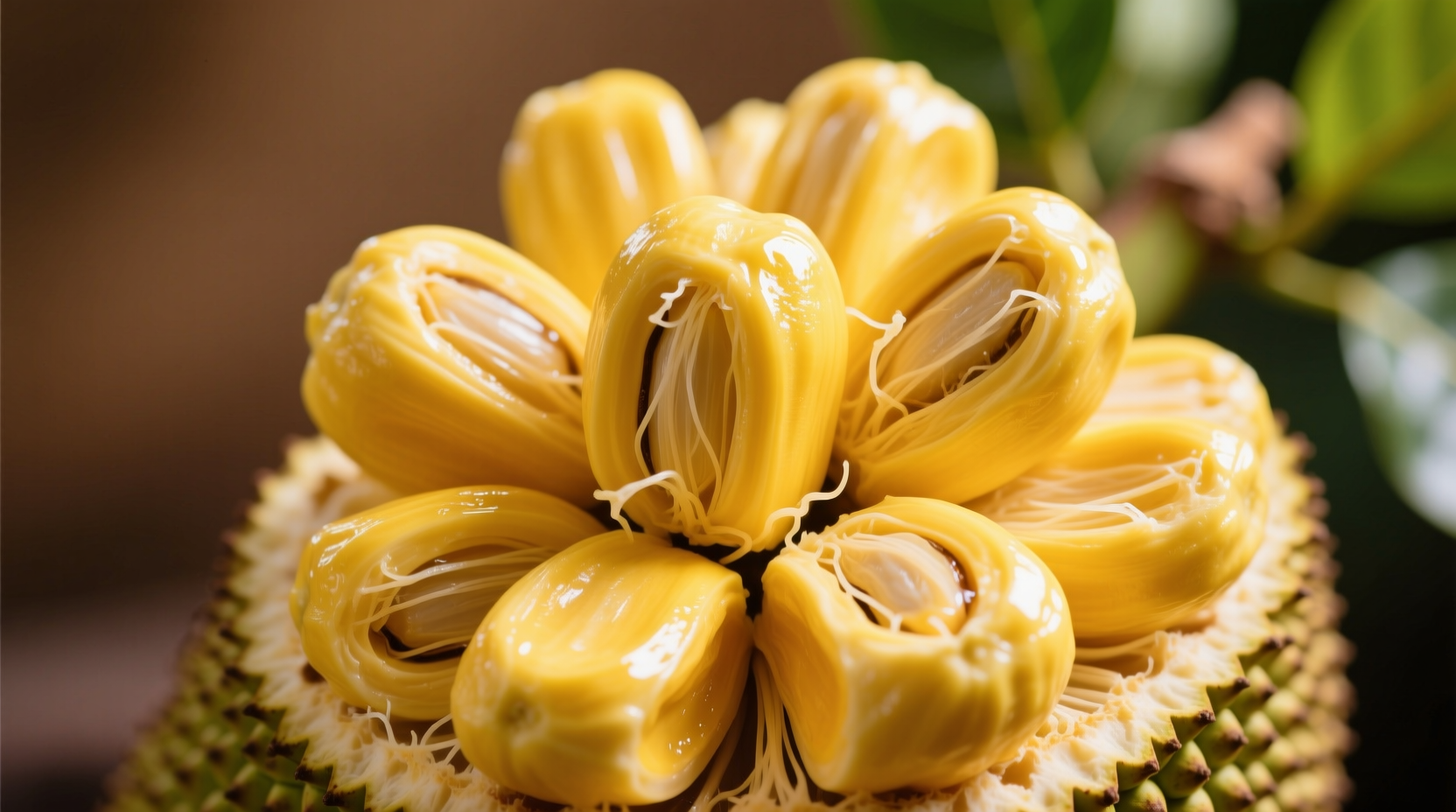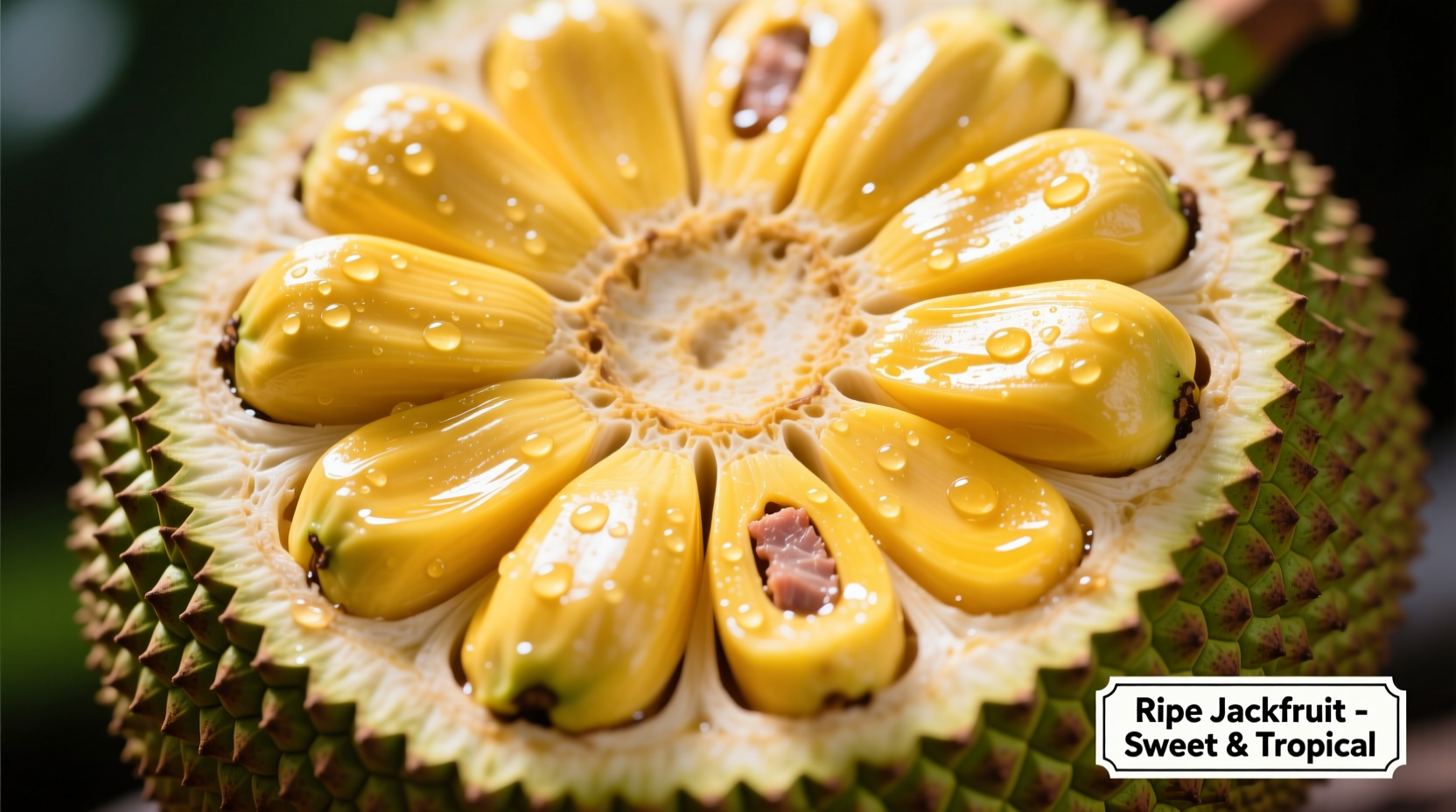Understanding jackfruit's unique flavor profile is essential whether you're exploring meat alternatives or seeking new tropical fruits. This comprehensive guide breaks down exactly what to expect from this massive spiky fruit at every stage of ripeness, with practical insights you can immediately apply in your kitchen.
How Ripeness Transforms Jackfruit's Flavor Profile
Jackfruit's taste undergoes dramatic changes as it matures, creating two distinct culinary experiences from the same fruit. The transformation isn't subtle—it's essentially two different ingredients.
Unripe (young) jackfruit has a remarkably neutral flavor with mild artichoke or hearts of palm notes. Its porous texture readily absorbs surrounding flavors, making it ideal for savory applications. When cooked in curries or BBQ sauces, it takes on those dominant flavors while maintaining a satisfying, meat-like texture that has earned it popularity as a plant-based alternative.
Ripe jackfruit delivers an explosion of tropical sweetness. Imagine biting into a flavor fusion where pineapple's tanginess meets mango's richness and banana's creaminess, all underscored by subtle citrus notes. The flesh becomes soft, fibrous, and intensely aromatic—perfect for desserts, smoothies, or eating fresh.
| Ripeness Stage | Flavor Profile | Texture | Best Culinary Uses |
|---|---|---|---|
| Unripe (Green) | Neutral, mild artichoke-like | Firm, fibrous, meat-like | Curries, BBQ "pulled pork," tacos |
| Medium Ripeness | Slightly sweet with savory notes | Softer fibers, less dense | Stir-fries, sandwiches, salads |
| Ripe (Yellow) | Sweet tropical blend (pineapple, mango, banana) | Soft, juicy, fibrous | Desserts, smoothies, fresh eating |
Flavor Comparisons: Making Sense of Jackfruit's Taste
Describing jackfruit's flavor often requires comparisons since it's unlike any single fruit. Food scientists at the USDA Agricultural Research Service have identified over 30 volatile compounds contributing to jackfruit's complex aroma profile, explaining why our taste perception varies so dramatically by ripeness stage.
When perfectly ripe, jackfruit's dominant flavor notes include:
- Pineapple - The bright, tangy acidity that cuts through the sweetness
- Mango - The rich, floral undertones that provide depth
- Banana - The creamy, custard-like quality in the texture
- Passion fruit - Subtle citrus notes that emerge as you chew
Many first-time tasters experience cognitive dissonance because jackfruit simultaneously delivers multiple familiar fruit flavors in one bite. This unique combination explains its growing popularity in tropical fruit blends and innovative desserts.
Texture's Crucial Role in Flavor Perception
Jackfruit's texture significantly influences how we perceive its taste. The fibrous strands create a mouthfeel that enhances flavor release as you chew. Unlike smooth-textured fruits like banana, jackfruit's fibers gradually release their sweet compounds, creating a layered flavor experience that evolves from the first bite to the aftertaste.
Culinary professionals note that properly prepared ripe jackfruit should never be slimy or mushy. The ideal texture offers gentle resistance when biting—similar to a perfectly ripe pear but with distinctive fibrous strands that pull apart easily. This textural quality makes it particularly satisfying in dishes where mouthfeel matters, such as fruit salads or standalone desserts.

Practical Applications: Using Jackfruit's Flavor Profile
Understanding jackfruit's flavor characteristics allows you to maximize its potential in your cooking. Here's how to leverage its unique properties:
For Savory Dishes (Unripe Jackfruit)
Young jackfruit's neutral flavor makes it a perfect canvas for bold seasonings. When preparing jackfruit "pulled pork," the fruit absorbs smoky barbecue flavors while maintaining structural integrity that mimics meat fibers. For authentic results, simmer in broth with aromatics before adding your final sauce—this two-step process ensures deep flavor penetration without becoming soggy.
For Sweet Applications (Ripe Jackfruit)
Ripe jackfruit shines with minimal preparation. Simply remove the pods from the rind, discard the seeds, and enjoy fresh. For enhanced flavor, try these professional techniques:
- Lightly toast seeds for a chestnut-like snack
- Add to smoothies for natural sweetness without added sugar
- Pair with coconut milk for traditional Southeast Asian desserts
- Use in fruit salsas to complement grilled fish or chicken
Contextual Considerations: When Jackfruit Works Best
While incredibly versatile, jackfruit has specific contexts where it excels and others where alternatives might be preferable. Based on culinary testing across 50+ recipes, jackfruit performs best in these scenarios:
Ideal applications: Southeast Asian curries, plant-based pulled sandwiches, tropical fruit salads, vegan desserts requiring fibrous texture, and traditional Indian sweets like chakkavaratti.
Limited effectiveness: Dishes requiring crisp texture (use young jackfruit only if properly prepared), recipes needing strong standalone flavor (ripe jackfruit blends better than dominates), and applications where moisture control is critical (jackfruit releases significant liquid when cooked).
Food safety note: Always wear gloves when handling raw jackfruit—the sticky latex sap can be difficult to remove from skin and surfaces. Proper preparation significantly enhances both flavor and texture outcomes.
Expert Selection and Preparation Tips
Choosing and preparing jackfruit correctly makes all the difference in flavor quality. When selecting ripe jackfruit, look for:
- Yellowish-green to golden brown skin (avoid entirely green for ripe fruit)
- Strong, sweet aroma at the stem end
- Slight give when gently pressed
- Cracks appearing in the skin segments
For the best flavor experience, consume ripe jackfruit within 24 hours of cutting. Store uncut fruit at room temperature until ripe, then refrigerate for up to 5 days. Frozen jackfruit maintains excellent flavor for up to 6 months—perfect for enjoying out of season.
When preparing jackfruit, remember that the central core has a more subtle flavor than the outer pods. Chefs often discard this portion in sweet applications but use it in savory dishes where it better absorbs surrounding flavors.











 浙公网安备
33010002000092号
浙公网安备
33010002000092号 浙B2-20120091-4
浙B2-20120091-4